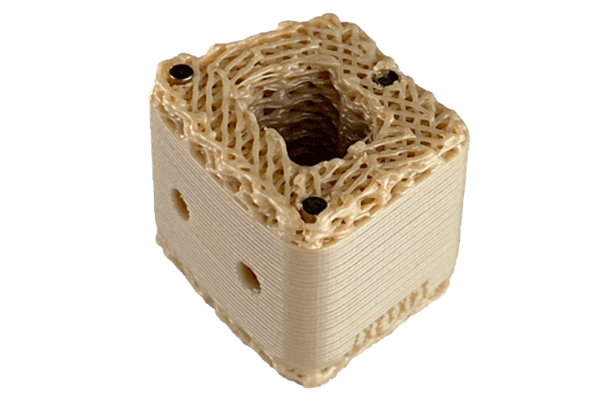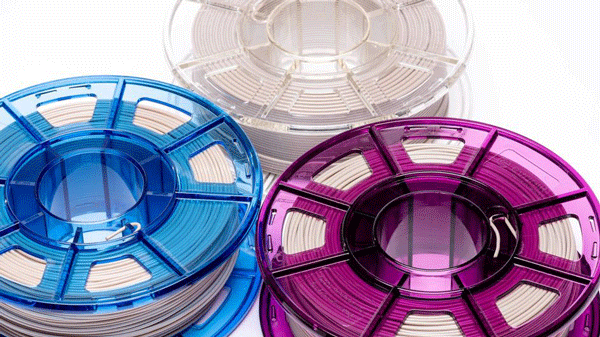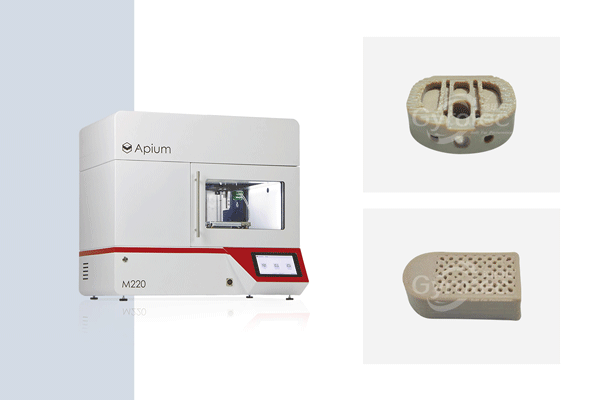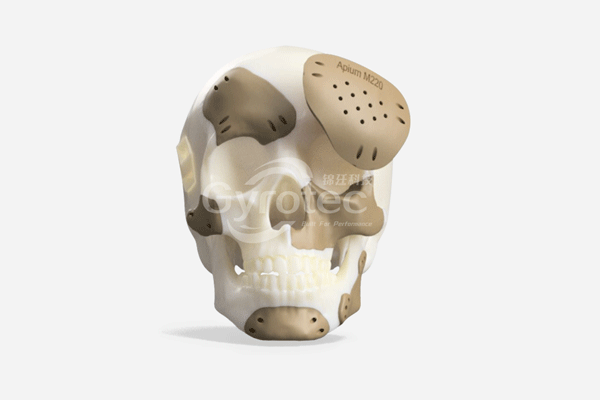The first commercial 3D printed porous PEEK spinal implant was launched in the United States in mid-April 2023, and the implantation procedure has been successful, the foreign online magazine in additive manufacturing has learned. A new breakthrough in the field of medical 3D printing, this case is revolutionary. The spine implant, made with Evonik VESTAKEEP® i4 3DF implant-grade filament and developed by U.S. technology company Curiteva, has been approved by the U.S. Food and Drug Administration and is the first-ever 3D printed porous interconnected polyetheretherketone (PEEK) implant.

▲3D printed PEEK spinal implant. Photo from Curiteva
Dr. Alex Vaccaro, director of the Philadelphia-based Roseman Orthopaedic Institute, said, "I believe that structure is the driving force behind biology, and the lattice PEEK architecture enabled by Curiteva's 3D printing process is a significant advancement for spinal, orthopaedic and neurosurgical procedures involving any type of biological implant. "
Dr. Kevin Foley, chair of the Semmes-Murphey Neurological and Spine Institute and professor of neurosurgery, orthopedic surgery and biomedical engineering at the University of Tennessee Health Science Center, commented, "Inspire's porous PEEK technology meets all the requirements for an ideal intervertebral implant: porous interconnected porosity, equivalent elastic modulus of cancellous bone, robust biomechanical properties, radiolucency and a bioactive surface for osseointegration."
Randy Dryer, M.D., of the Central Texas Spine Institute, commented, "Interconnected porosity, pore size distribution, and nanosurface structure are typical characteristics of effective synthetic allografts. I believe this new implant enhanced with HAFUSE nanosurface topography has these characteristics and provides a favorable environment for bone progenitor cells throughout the implant, thereby promoting bone healing (fusion) and reducing the risk of subsidence. I look forward to offering this product to my patients."
Evonik's VESTAKEEP® i4 3DF filament has been developed specifically for additive manufacturing processes and is compliant with ASTM F2026. Marc Knebel, head of Evonik's Medical Devices and Systems Marketing Division, said, "Our innovative development of VESTAKEEP® i4 3DF filament is designed for biocompatibility, biostability and X-ray transmissibility, making it an implant-grade material for orthopedic and maxillofacial surgery."
▲Medical grade VESTAKEEP filament. Photo from Evonik
As a partner of Evonik Specialty Chemicals Shanghai Gyrotec Technologies Co., Ltd. and a long-time contributor to polyether ether ketone (PEEK) research, the company represents the Apium Bio PEEK 3D printer, a 3D printer designed for the manufacture of medical products and PEEK implants. Personalized orthopedic implants can be produced by 3D printing to meet clinical and scientific needs (materials engineering, biological tissue engineering). Medical PEEK materials can be used in scientific research, material modification studies, and clinical implant devices.
▲Apium 3D printed intervertebral fusion device
PEEK implants can be personalized using the Apium Bio PEEK 3D printer, which prints implants with excellent biosafety, histocompatibility, and good osteoinduction, and a porous surface structure that facilitates fusion growth of bone.
▲Apium打印个性化PEEK植入物
3D printed PEEK implants have been used in a variety of applications in spine, joint, trauma, oral craniomaxillofacial, neurosurgery, plastic surgery, etc. 3D printing of PEEK personalized orthopedic implants, a cutting-edge innovative manufacturing method, will become an emerging hot direction in the orthopedic implant market with excellent market prospects. We have a complete set of data analysis and personalized solutions for 3D printing PEEK implants, please feel free to consult us if you need.
Link to original article:https://3druck.com/medizin/evoniks-peek-biomaterial-wurde-in-den-usa-fuer-3d-gedruckte-wirbelsaeulenimplantate-verwendet-40117531/






























 Home
Home Telephone
Telephone Message
Message







